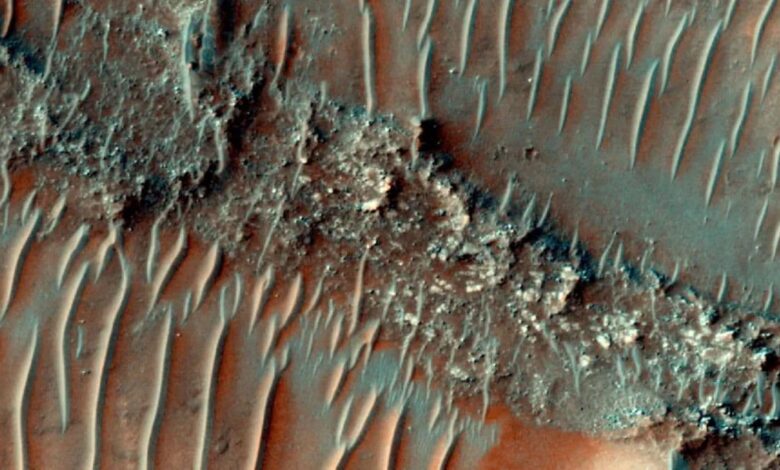Mars Rain: New Clues to Ancient Martian Life

Mars’ Ancient Rainfall: A New Perspective on Martian Climate
Recent research has challenged the long-held belief that Mars has always been a dry and desolate planet. A new study published in Nature Geoscience reveals evidence of significant rainfall events that shaped the Martian landscape billions of years ago. This discovery suggests that early Mars may have possessed a thicker atmosphere and a wetter, warmer climate, potentially creating conditions suitable for life.
Evidence of Heavy Rains
The study, conducted by researchers using satellite data and advanced erosion modeling techniques, analyzed crater erosion patterns across the Martian surface. Their findings indicate that substantial amounts of water flowed across the planet, suggesting precipitation levels comparable to those found in Earth’s tropical regions today. This implies that Mars once had a hydrological cycle, with rain playing a crucial role in shaping its geological features.
A Thicker Atmosphere
The existence of heavy rainfall also points to a thicker Martian atmosphere in the past. A denser atmosphere would have been necessary to support the formation of clouds and precipitation. The Royal Astronomical Society suggests that the atmosphere was thick enough to sustain these heavy rains. This contrasts sharply with the thin, arid atmosphere that characterizes Mars today.
Implications for the Search for Life on Mars
The revelation of a wetter, warmer early Mars has profound implications for the search for extraterrestrial life. While rain alone doesn’t guarantee the existence of life, it does provide a crucial ingredient: liquid water. Water is essential for all known forms of life, and its presence on early Mars significantly increases the possibility that microbial life may have once thrived there.
Adapting to a Wetter Climate
If life did exist on early Mars, it would have had to adapt to a climate characterized by frequent rainfall and erosion. This could have led to the development of unique survival strategies and adaptations. The study highlights that any primitive life would have adapted to the climate and terrain of Mars.
The Role of Erosion
The constant downpours would have led to significant erosion, dramatically altering the Martian landscape over time. This erosion could have played a role in shaping the geological features we observe today, including riverbeds, canyons, and sedimentary deposits. It became a driving force in the change of the shape of Mars’ landscape.
Current Missions and Future Research
The findings of this study add further impetus to current and future missions aimed at exploring Mars and searching for signs of past life. NASA’s Perseverance rover, currently exploring Jezero Crater, is actively searching for fossilized evidence of microbial life. The discovery of ancient rainfall events strengthens the case for Jezero Crater, believed to have once been a lake, as a promising location for finding such evidence.
NASA’s Perseverance Rover
The Perseverance rover’s mission is to collect and cache samples of Martian rock and soil that could potentially contain biosignatures. These samples will eventually be returned to Earth for further analysis, providing scientists with an unprecedented opportunity to study the Martian environment and search for evidence of past life. This adds excitement to the current missions named NASA’s Perseverance rover, which is active in the search for fossilised signs of past life on Mars.
Expanding the Scope of Extraterrestrial Life Search
This research not only redefines Mars’ past era climate, but also widens the scope of what early life could look like on other planets. It also tells us that the extraterrestrial life search is not just limited to Earth but also to the planets that had the possibility of life in the past.
Future Research Directions
Future research should focus on further investigating the evidence for ancient rainfall events on Mars, including analyzing the composition of Martian rocks and soils for signs of water-related alteration. Additionally, studies should explore the potential for subsurface water reservoirs on Mars, which could provide a refuge for life even in the harsh conditions of the present-day Martian surface.
| Feature | Early Mars | Present-Day Mars |
|---|---|---|
| Atmosphere | Thicker, denser | Thin, arid |
| Climate | Wetter, warmer | Cold, dry |
| Precipitation | Heavy rainfall | Virtually none |
| Surface Water | Rivers, lakes | Frozen at poles, possible subsurface water |
| Potential for Life | Higher | Lower, but not impossible |




